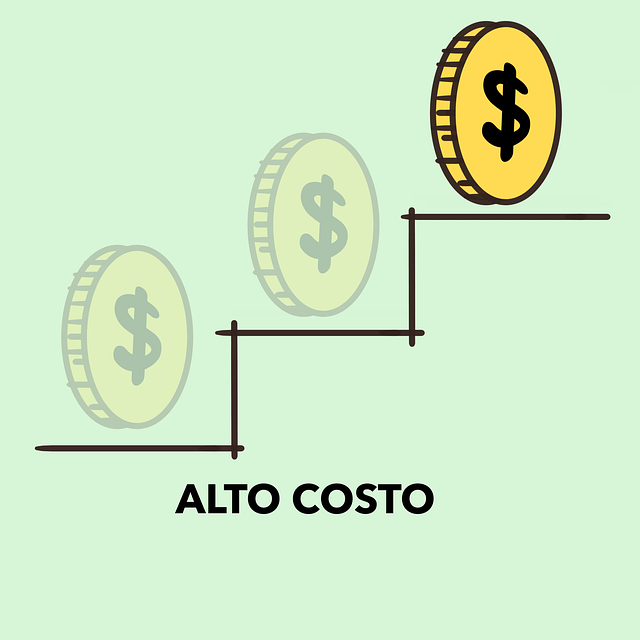The injectable hormone semaglutide is a prominent diabetes treatment due to its dual role in stimulating insulin and inhibiting glucagon, leading to improved glycemic control. While it offers significant medical benefits, including reduced HbA1c levels and weight management, its high cost poses substantial barriers for patients, especially those with limited financial resources. This financial strain can lead to non-adherence, negatively impacting diabetes control and increasing health risks. Understanding insurance coverage, exploring patient assistance programs, and considering generics are strategies to navigate these costs. Patient advocacy groups are actively working to reduce drug prices and improve accessibility. Addressing the cost of semaglutide is crucial for equitable healthcare access and improved patient outcomes.
“The cost of semaglutide treatment has emerged as a significant barrier to access for many patients, impacting their healthcare decisions and outcomes. This comprehensive guide delves into the rising costs associated with semaglutide, examining its medical benefits against financial constraints. From patient out-of-pocket expenses to insurance coverage, we explore strategies to navigate these challenges. We discuss affordable alternatives, generic options, patient advocacy, and real-life case studies, offering insights into how cost-related decisions shape patient adherence and outcomes.”
Understanding Semaglutide and Its Medical Benefits

Semaglutide is a medication that has gained significant attention in recent years, especially within the diabetes community. It’s a type of injectable hormone that mimics a natural substance produced by our bodies to regulate blood sugar levels. The key to its success lies in its ability to stimulate insulin production and inhibit glucagon release, leading to improved glycemic control. This dual action makes semaglutide an effective treatment option for type 2 diabetes patients who need help managing their blood sugar.
The medical benefits of semaglutide are well-documented, with numerous studies showcasing its potential to reduce HbA1c levels (a marker of long-term blood sugar control) and support weight management. By helping individuals achieve better glycemic control, it can decrease the risk of diabetes-related complications such as nerve damage, kidney problems, and cardiovascular events. Additionally, its impact on weight loss has opened new possibilities for managing obesity and related health issues. However, despite these advantages, one significant factor that influences patient decisions is the cost of semaglutide treatment.
The Rising Cost of Semaglutide Treatment

The rising cost of semaglutide treatment has become a significant barrier for many patients, particularly those with limited financial resources. As one of the most effective medications for managing type 2 diabetes, its high price tag poses a challenge to patient adherence and access to care. The cost of semaglutide continues to rise, outpacing inflation rates, making it increasingly difficult for patients to afford their prescriptions without significant out-of-pocket expenses.
This financial burden can lead to important decisions about treatment choices. Patients may opt to skip doses or switch to less expensive alternatives, potentially compromising the effectiveness of their diabetes management. Understanding and addressing these cost-related patient decisions are crucial in ensuring that all individuals have equal access to quality healthcare and the benefits of semaglutide treatment.
Patient Out-of-Pocket Expenses: A Breakdown

Patient out-of-pocket expenses for semaglutide treatment can vary widely and are a significant consideration when making decisions about this medication. The cost of semaglutide, like many prescription drugs, is influenced by several factors including brand name, pharmacy location, and patient insurance coverage. On average, patients without insurance or with high-deductible plans may pay hundreds of dollars per month for semaglutide, making it unaffordable for some.
For those with insurance, co-pays can still add up. Even with coverage, patients often face additional costs like copays, deductibles, and potential coinsurance amounts. Understanding these expenses beforehand is crucial for managing financial expectations. Additionally, many pharmacies offer patient assistance programs or discount cards that may help offset some of these costs, making semaglutide treatment more accessible to those who need it.
Insurance Coverage and Semaglutide Reimbursement

Semaglutide, a medication for type 2 diabetes, has shown significant benefits in weight management. However, the cost of semaglutide can be a barrier for patients considering treatment. Understanding insurance coverage and reimbursement policies is essential for patients navigating these financial aspects. Many health insurance plans in the United States cover semaglutide, but out-of-pocket expenses may vary depending on the specific plan and prescription. Patients should review their policy details to comprehend co-pays, deductibles, and any prior authorization requirements before initiating treatment.
Reimbursement processes can differ among healthcare providers and insurance companies, potentially leading to variations in out-of-pocket costs for patients. Some insurers offer preferred drug lists, where semaglutide might be more affordable. Patients can often appeal or negotiate with their insurance providers if they encounter issues with coverage or reimbursement. Exploring alternative payment options or patient assistance programs offered by pharmaceutical companies is another strategic approach to managing the cost of semaglutide treatment.
Exploring Affordable Alternatives and Generics

Many patients considering semaglutide treatment often weigh the significant cost associated with this medication. Thankfully, there are strategies to explore affordable alternatives. Generics, for instance, offer a more budget-friendly option by producing the same active ingredient as brand-name drugs but at a lower price point. These generics undergo rigorous testing to ensure they meet safety and efficacy standards, providing patients with a cost-effective way to access semaglutide therapy.
Additionally, insurance coverage plays a crucial role in managing treatment costs. Patients should review their policy benefits, compare pricing among pharmacies, and consider using pharmacy loyalty programs or patient assistance programs offered by manufacturers. These initiatives can help reduce out-of-pocket expenses and make semaglutide treatment more accessible for those who need it.
Patient Advocacy and Negotiating Drug Prices

Patient advocacy plays a significant role in navigating the challenges posed by the high cost of semaglutide treatment. Many patients and their families struggle with the financial burden associated with this medication, which is often crucial for managing chronic conditions like type 2 diabetes. Patient advocacy groups and organizations have been instrumental in raising awareness about the importance of affordable healthcare and negotiating drug prices with pharmaceutical companies.
These efforts aim to ensure that patients have access to necessary medications without facing economic hardships. By organizing and amplifying patient voices, these groups can influence policy changes and encourage manufacturers to offer more flexible pricing models or generic alternatives. This collaborative approach can help make the cost of semaglutide more manageable for those who depend on it for their well-being.
Case Studies: Real-life Experiences with Cost-related Decisions

In the realm of healthcare, the decision-making process often involves balancing therapeutic benefits against financial constraints. The cost of semaglutide, a medication known for its efficacy in diabetes management, serves as a prominent example. Case studies from various regions offer insightful glimpses into how patients and their caregivers navigate the financial aspects of this treatment.
One such study highlighted a patient’s journey who, despite facing substantial out-of-pocket expenses for semaglutide, remained committed to the medication due to its significant impact on glycemic control. Conversely, another real-life scenario illustrated the challenge of adhering to the prescribed dosage regimen when the cost of refills became a burden. These narratives underscore the intricate relationship between patient well-being and financial considerations, emphasizing the need for accessible healthcare solutions and cost-effective treatment options.
The Impact on Patient Adherence and Outcomes

The cost of semaglutide treatment can significantly influence patient adherence, which in turn impacts outcomes. Many patients face challenging financial barriers when it comes to affording prescription medications, and semaglutide is no exception. The high cost of this medication may discourage some individuals from continuing their prescribed regimen, leading to suboptimal results. Patient adherence is crucial for managing chronic conditions effectively, as consistent use ensures the medication’s active ingredients can have their intended effect over time.
When patients must constantly worry about the financial burden of their treatment, they may be more likely to skip doses or discontinue therapy altogether. This can result in worsening health outcomes, increased risk of complications, and a higher likelihood of hospitalization. Moreover, cost-related non-adherence can lead to a cycle of poor health, frequent medical visits, and escalating healthcare expenses for both patients and the healthcare system as a whole.
Future Perspectives: Addressing the Financial Barrier

As the accessibility and affordability of semaglutide treatment become key considerations in patient care, future perspectives must address the financial barrier that still prevents many individuals from benefiting from this life-changing medication. The cost of semaglutide remains a significant obstacle, especially for those without robust insurance coverage or facing high out-of-pocket expenses.
Innovative strategies and collaborative efforts between healthcare providers, pharmaceutical companies, and policymakers are necessary to make semaglutide more accessible. This may include exploring alternative pricing models, expanding patient assistance programs, and negotiating lower prices with insurers. By addressing these financial challenges, we can ensure that the benefits of semaglutide treatment extend to a broader range of patients, ultimately improving overall health outcomes and quality of life.
